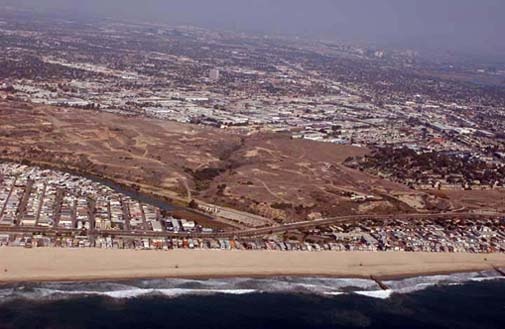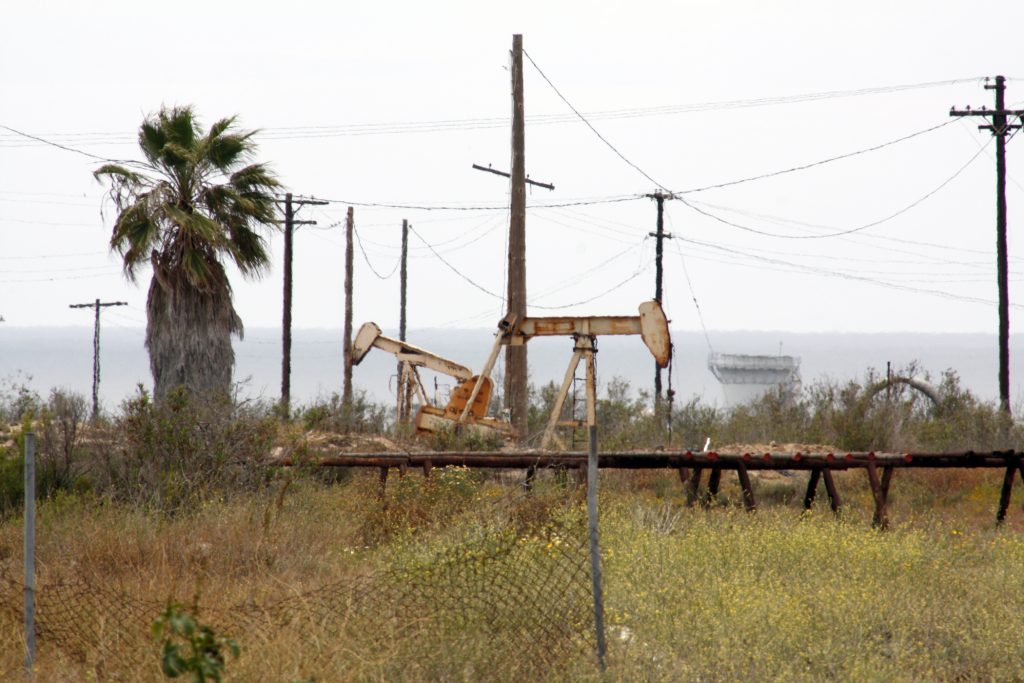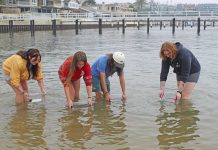
— Photo courtesy city of Newport Beach ©
[EDITOR’S NOTE: After the Newport Beach Independent went to print this week, Newport Banning Ranch sent an email stating that they have requested postponement of the Coastal Commission hearing set for Thursday, May 12. Newport Banning Ranch stated that they need more time to fully understand the Coastal Commission report that recommends approving the Banning Ranch development, but with added conditions.
This article about the Coastal Commission hearing on Banning Ranch appeared in the Newport Beach Independent on Friday, May 6, prior to the postponement announcement.]
California Coastal Commission staff has flipped their position on Newport Banning Ranch, after the developers submitted a scaled-down version of the project, and now recommend approval of the item.
The project would abandon most of the oil operations, clean and remediate the soil, preserve some natural space, and construct a housing and mixed-use development.
In the CCC staff report released Friday, the most significant change is a reduction of the residential units from the previously proposed 1,375 units down to 895.
Another major change is the increase in “developable area” from roughly 18 acres up to approximately 55 acres.
The 152-page report summary document and 339 pages of letters (2,005 letters of opposition and 242 letters of support) can be viewed on the Coastal Commission website.
Commissioners will discuss and vote on the project at their Thursday meeting, which will be held in Newport Beach City Council chambers.
The 401-acre proposed project would also include a 75-room resort hotel, 20-bed hostel, 45,100 square feet of commercial/retail space, 10.7 acres of parks, public trail network, and a 310-acre nature preserve on the property. Oil operations would remain on 15 acres.
There are strong reactions to the project on both sides of the issue.
“Without project approval, Newport Banning Ranch will remain an unsightly, operating oil field with no public access for this generation and generations to come. There’s nothing good about that,” said officials from the project applicant, Newport Banning Ranch, LLC. “But once fully restored under our proposed plan, the ranch will be a healthy, sustainable community with more than 80 percent of the property devoted to trails, parks, public access and open space.”
It will allow everyone, people and wildlife, to enjoy the extraordinary coastal resource benefits the project will provide, they added.
“We’re working hard to create the kind of place that’s all about nature and family and everything that’s good,” NBR officials remarked when the CCC staff report was released.
On the other side, Banning Ranch Conservancy is fighting to protect the last large coastal open space in Orange County.
“(It’s a) slightly scaled down plan, but it’s still huge,” said Conservancy President Terry Welsh. “It’s still a colossally large project.”
Even though it’s been an oil field for many years, it still served the native wildlife, Welsh explained. That big of a project will not be able to avoid all of the important habitat, he said, which include rare species like the California gnatcatcher and the burrowing owl. The site also has historical significance as a documented native American settlement, Welsh added.
“People should know about this and what’s going on,” Welsh said. “It’s not a done deal. People can still make a difference by showing up at the meeting on Thursday.”
The community would be well served with Banning Ranch saved as open space, he said.
In October, Coastal staff recommended the commission reject the project. Instead, they voted to postpone their decision and hear the project again. After withdrawing the application because of time constraints, dismissing the CCC executive director, and re-submitting a revised version of the project, Banning Ranch is finally back on the Coastal Commission’s table.
Commissioners emphasized the importance of Environmentally Sensitive Habitat Areas during the Banning Ranch discussion in October. Several commissioners raised concerns about how the project impacted ESHA.
Coastal staff worked since October to verify the sensitive resources, identify and map the site constraints, and modify the developable area in an effort to create a revised proposal that avoids wetlands, ESHA, and other constraints.

— Photo by Christopher Trela ©
The result was an increase in the area allowed for development from slightly more than 18 acres (7.4 acres of which would have been used for oil operations, leaving nearly 11.5 acres to be developed) to 55 acres.
“We just flat out disagree with that,” Welsh said. “We do not agree with this backpedaling.”
Staff got it right the first time, the 11.5 acres was reasonable, he said
The work also resulted in some areas that were classified as ESHA in October being re-classified as non-ESHA.
The habitat hasn’t changed, it’s still there, Welsh noted, they’ve only changed how they classify it. For example, all vernal pools counted as ESHA in October, but now staff is claiming only the vernal pools with the endangered San Diego fairy shrimp are ESHA.
The effect of the re-classification has allowed the footprint of the development to expand,” Welsh said.
Staff dedicated several pages to defining and describing ESHA in the recent report.
Coastal staff does note that although the applicant has revised its proposal, it still extends well beyond the boundaries of the increased 55-acres of developable area identified by staff and into the sensitive habitat, the recent report reads. The current proposal would thereby destroy large swaths of ESHA and wetlands and it would do so despite the fact that the project could be redesigned to avoid all of that ESHA and still provide substantial development, the report reads.
The project could definitely be redesigned to better fit the area, agreed Dorothy Kraus, local resident and Conservancy supporter.
If the area were to be developed at all, it needs to be the right size and “it’s not right sized yet, not even close,” she said, speaking on behalf of herself and some of her friends and neighbors.
“It’s still a very large project… It‘s just massive,” she said. “It needs to be dialed back.”
Commissioners should consider the habitat boundaries and study the biological maps while staying true to the Coastal Act, she suggested.
“We’re counting on the Coastal Commission to evaluate the merits and demerits of this project and to uphold the Coastal Act. If they do that, then the residents can have a glimmer of confidence,” she said.
She urged residents to attend the meeting next week.
“We want to get as many people as we can to the hearing,” Kraus said, “so the Coastal Commission can see how many of us are concerned.”
For more information, visit coastal.ca.gov, newportbanningranch.com, banningranchconservancy.org, and savenewportbanningranch.org.
Steve Ray, Executive Director of the Banning Ranch Conservancy, will conduct a free two-hour tour of Banning Ranch at 10 a.m. on Saturday. While the public is not allowed on the property, Ray will take participants to several viewing spots, provide history of Banning Ranch and explain the conservancy’s efforts. No RSVP is required. The group will meet at the end of West 19th Street in Costa Mesa (corner of W. 19th Street and Balboa Avenue). Comfortable clothing, water, and sunscreen are advised. For more information, call Steve Ray at (310) 961-7610.





I was very surprised to see the proposal and subsequent staff approval of a much larger footprint for the hotel, hostel and retail space. What about lighting and traffic to and from this complex? It will absolutely ruin the view and peace of all Newport Crest owners facing the proposed development.
There should be no development of this area, with the exception of a very few acres off the end of 17th. There are a number of reasons for this as the correct outcome that I’ll discuss in a slideshow tomorrow, Tuesday at 6pm at the Seaside Cafe & Catering 1559 Placentia. http://www.naturecommission.org/ar/banning-ranch-oil-profits-past-100-percent-habitat-future
“We’re working hard to create the kind of place that’s all about nature and family and everything that’s good,” NBR officials remarked when the CCC staff report was released.
I believe this is called turning truth on its head and spanking it.